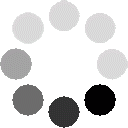Rights Contact Login For More Details
- Wiley
More About This Title Beginning Visual Basic 2010
- English
English
- English
English
Bryan Newsome is an author or coauthor of many books and works for a Microsoft Partner in Charlotte specializing in Custom Software Solutions. He provides clients with solutions and mentoring on leading-edge Microsoft technologies.
- English
English
INTRODUCTION xxix
CHAPTER 1: WELCOME TO VISUAL BASIC 2010 1
Event-Driven Programming 2
Installing Visual Basic 2010 3
The Visual Studio 2010 IDE 6
Creating a Simple Application 10
Using the Help System 20
Summary 20
CHAPTER 2: THE MICROSOFT .NET FRAMEWORK 23
Microsoft’s Reliance on Windows 23
Writing Software for Windows 27
Common Language Runtime 30
The Common Type System and Common Language Specification 33
Summary 33
CHAPTER 3: WRITING SOFTWARE 37
Information and Data 37
Working with Variables 39
Comments and Whitespace 42
Data Types 44
Storing Variables 65
Methods 70
Summary 80
CHAPTER 4: CONTROLLING THE FLOW 83
Making Decisions 83
The If Statement 84
Select Case 98
Loops 106
Summary 120
CHAPTER 5: WORKING WITH DATA STRUCTURES 123
Understanding Arrays 123
Understanding Enumerations 133
Understanding Constants 139
Structures 142
Working with ArrayLists 146
Working with Collections 153
Building Lookup Tables with Hashtable 157
Advanced Array Manipulation 164
Summary 166
CHAPTER 6: EXTENSIBLE APPLICATION MARKUP LANGUAGE (XAML) 169
What Is XAML? 170
XAML Syntax 171
Windows Presentation Foundation 174
Summary 189
CHAPTER 7: BUILDING WINDOWS APPLICATIONS 193
Responding to Events 193
Building a Simple Application 201
Counting Characters 205
Counting Words 207
Creating More Complex Applications 213
Creating the Toolbar 214
Creating the Status Bar 218
Creating an Edit Box 220
Clearing the Edit Box 222
Responding to Toolbar Buttons 224
Using Multiple Forms 230
Summary 233
CHAPTER 8: DISPLAYING DIALOG BOXES 237
The MessageBox 237
The OpenFileDialog Control 244
The SaveDialog Control 252
The FontDialog Control 257
The ColorDialog Control 260
The PrintDialog Control 263
The FolderBrowserDialog Control 271
Summary 275
CHAPTER 9: CREATING MENUS 277
Understanding Menu Features 277
Creating Menus 280
Context Menus 290
Summary 297
CHAPTER 10: DEBUGGING AND ERROR HANDLING 299
Major Error Types 300
Debugging 305
Error Handling 331
Summary 335
CHAPTER 11: BUILDING OBJECTS 339
Understanding Objects 339
Building Classes 343
Reusability 344
Designing an Object 345
Constructors 357
Inheritance 359
Objects and Structures 369
The Framework Classes 370
Summary 377
CHAPTER 12: ADVANCED OBJECT-ORIENTED TECHNIQUES 381
Building a Favorites Viewer 381
An Alternative Favorite Viewer 399
Using Shared Properties and Methods 404
Understanding Object-Oriented Programming and Memory Management 410
Summary 414
CHAPTER 13: BUILDING CLASS LIBRARIES 417
Understanding Class Libraries 418
Using Strong Names 424
Registering Assemblies 428
Designing Class Libraries 429
Using Third-Party Class Libraries 430
Viewing Classes with the Object Browser 431
Summary 432
CHAPTER 14: CREATING WINDOWS FORMS USER CONTROLS 435
Windows Forms Controls 436
Creating and Testing a User Control 436
Exposing Properties from User Controls 440
Design Time or Runtime 447
Creating a Command Link Control 449
Summary 460
CHAPTER 15: ACCESSING DATABASES 463
What Is a Database? 464
The SQL SELECT Statement 465
Queries in Access 467
Data Access Components and Controls 471
Data Binding 473
Summary 479
CHAPTER 16: DATABASE PROGRAMMING WITH SQL SERVER AND ADO.NET 483
ADO.NET 485
The ADO.NET Classes in Action 497
Data Binding 506
Summary 533
CHAPTER 17: DYNAMIC DATA WEB SITE 537
Creating a Dynamic Data Linq to SQL Web Site 537
Summary 547
CHAPTER 18: ASP.NET 549
Thin-Client Architecture 550
Web Forms versus Windows Forms 551
Web Applications: The Basic Pieces 552
Active Server Pages 553
Building Web Sites 555
Summary 579
CHAPTER 19: VISUAL BASIC 2010 AND XML 583
Understanding XML 583
The Address Book Project 587
Integrating with the Address Book Application 611
Summary 618
CHAPTER 20: DEPLOYING YOUR APPLICATION 621
What Is Deployment? 621
Creating a Visual Studio 2010 Setup Application 627
User Interface Editor 630
Deploying Different Solutions 633
Summary 637
Appendix A: Exercise Solutions 639
Appendix B: Where to Now? 655
INDEX 661

